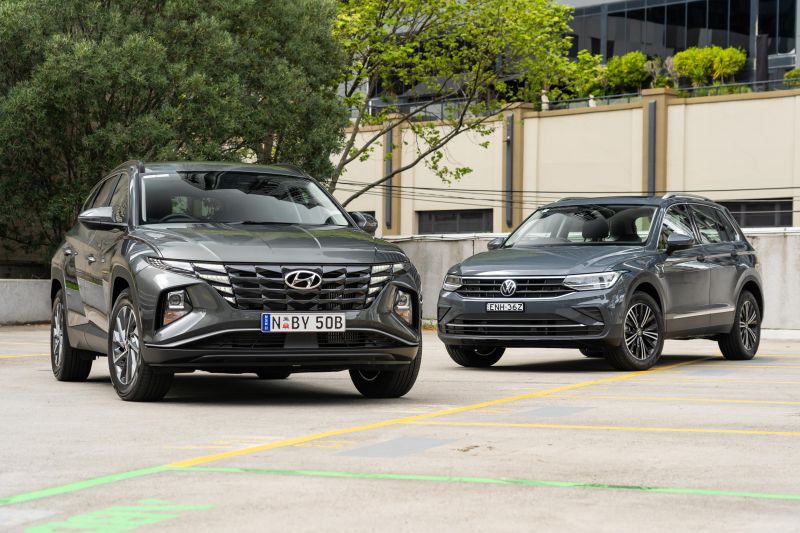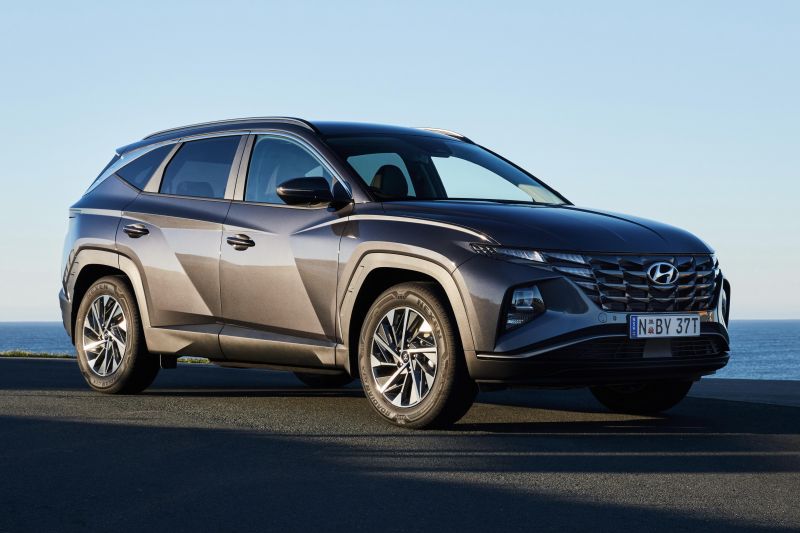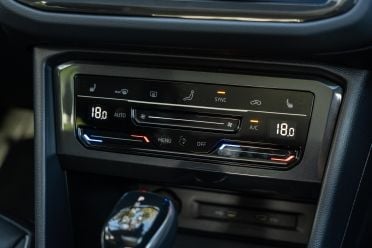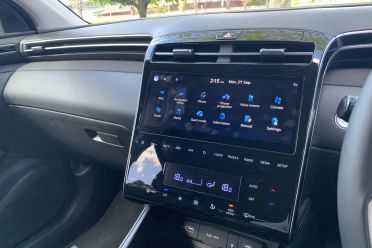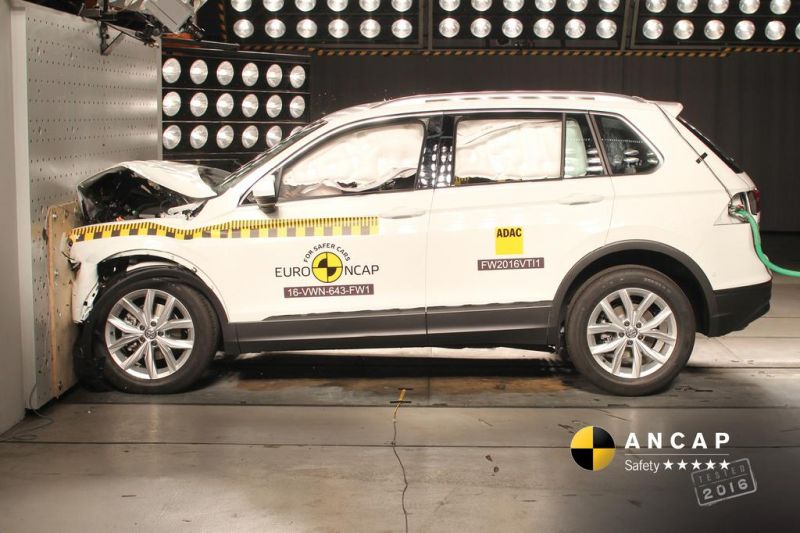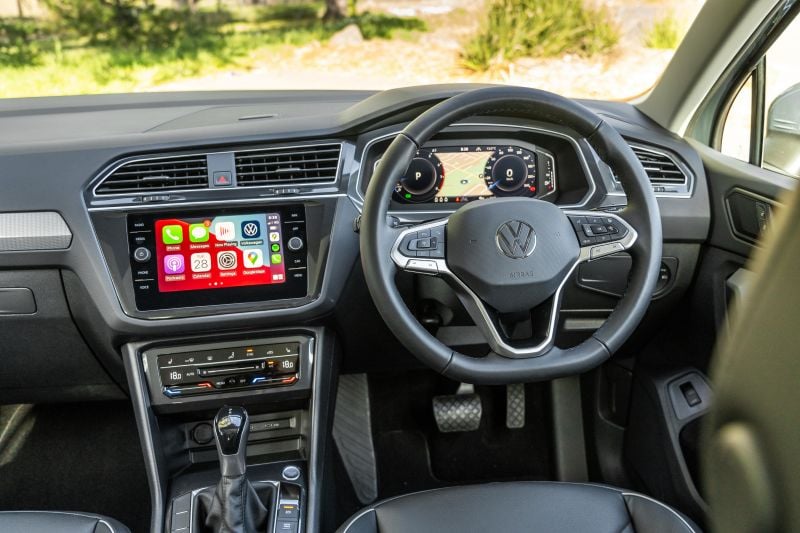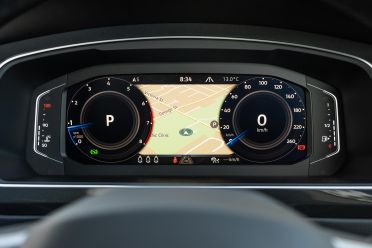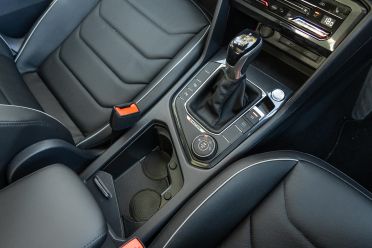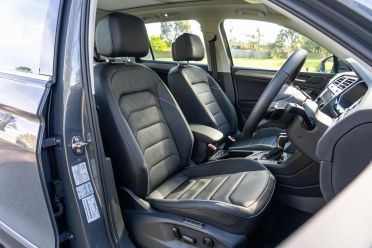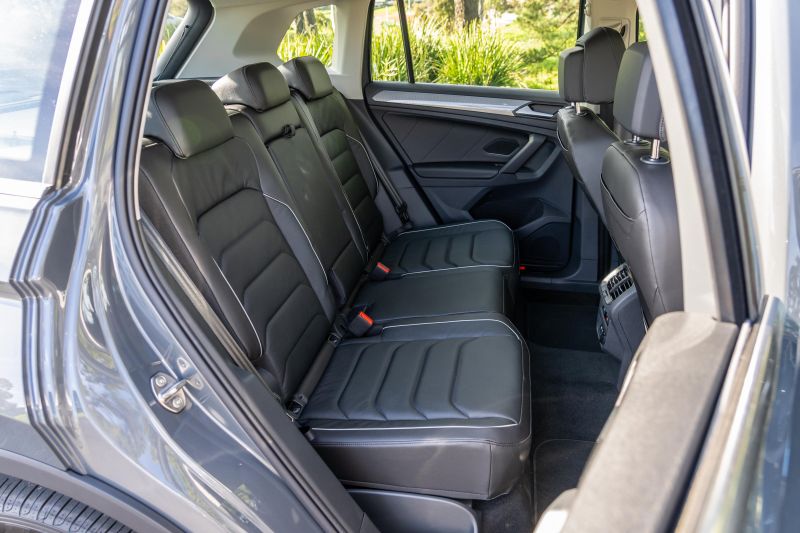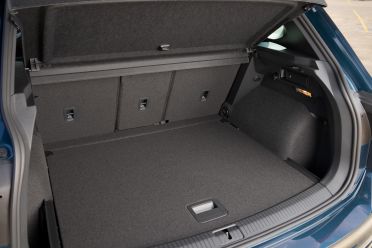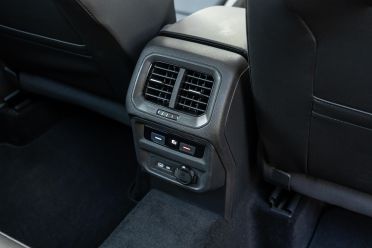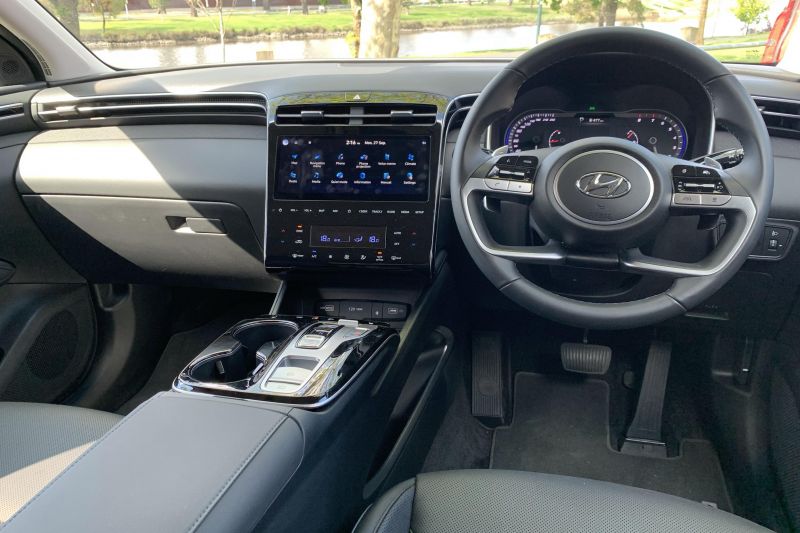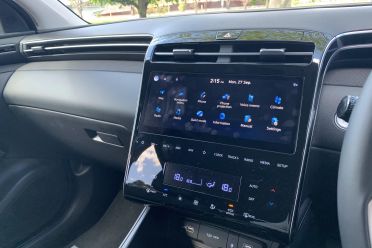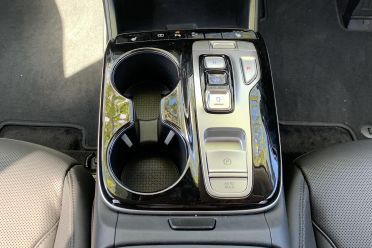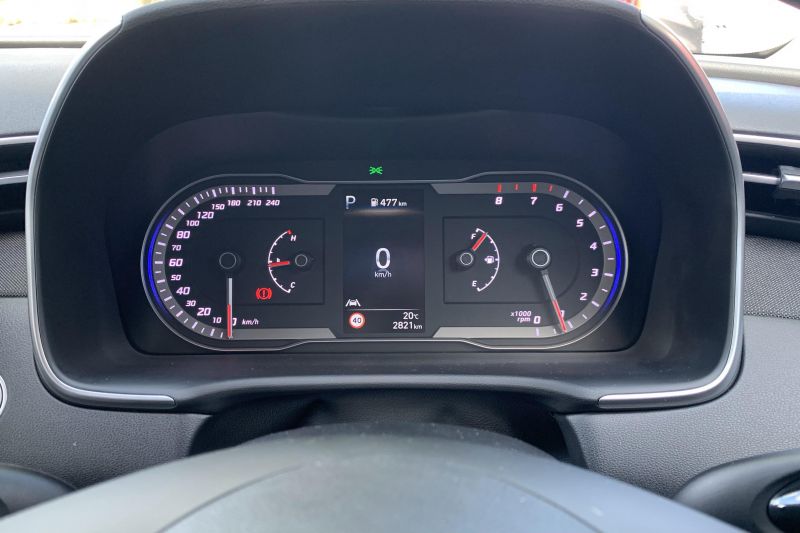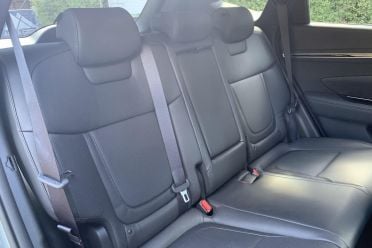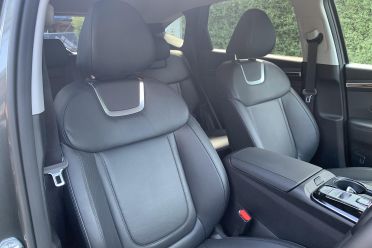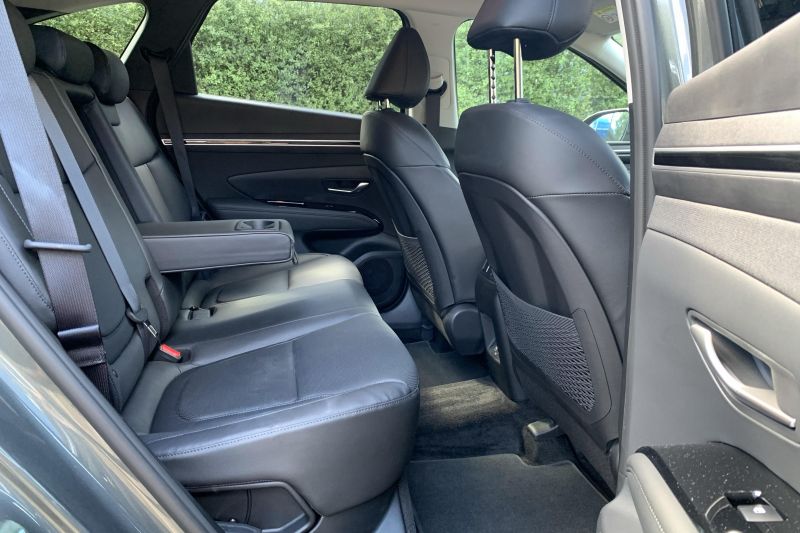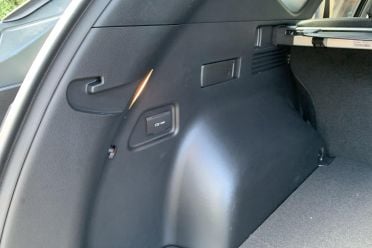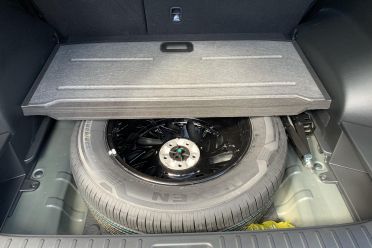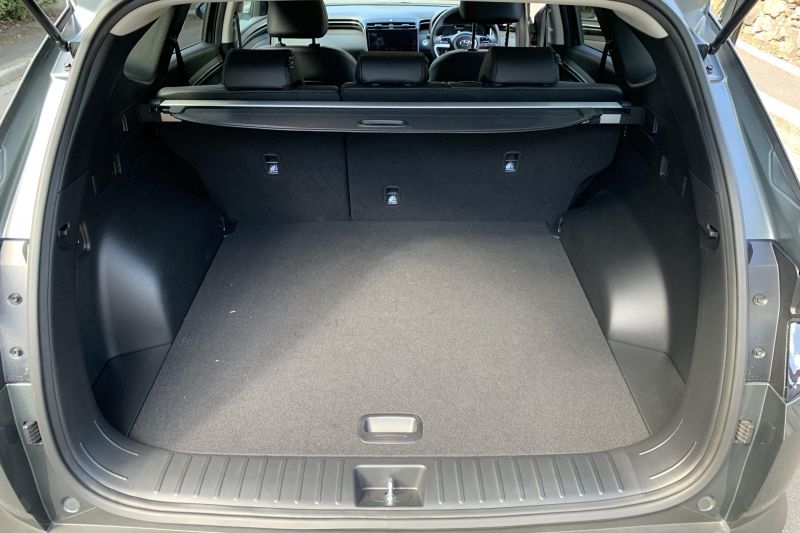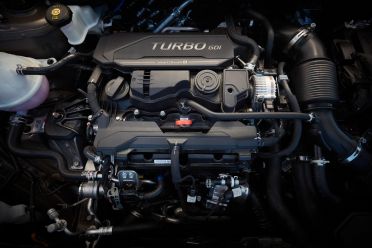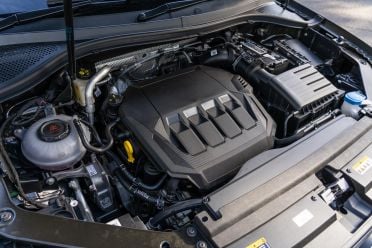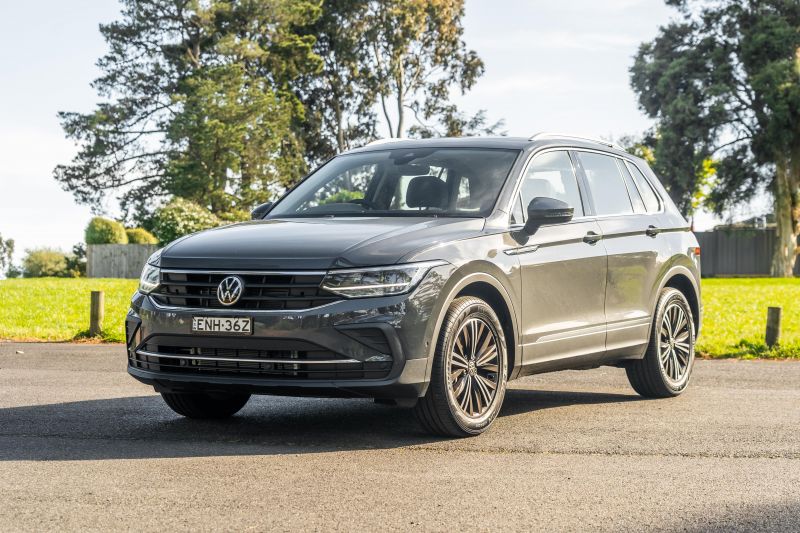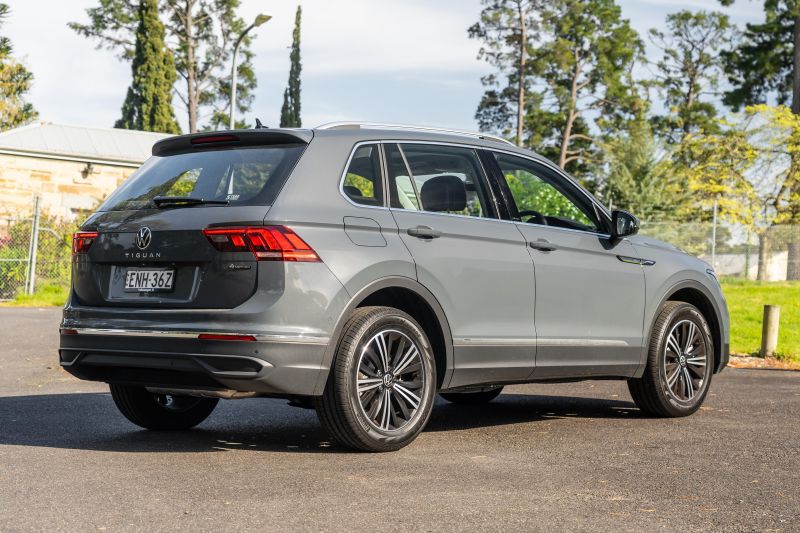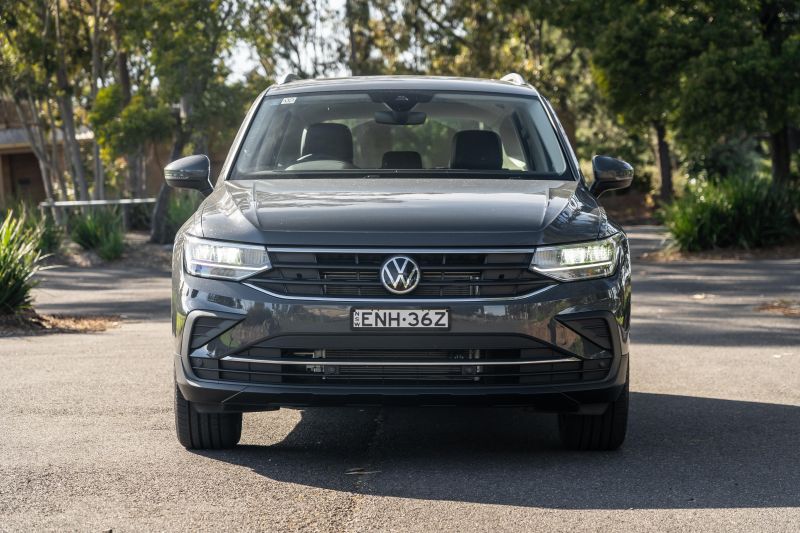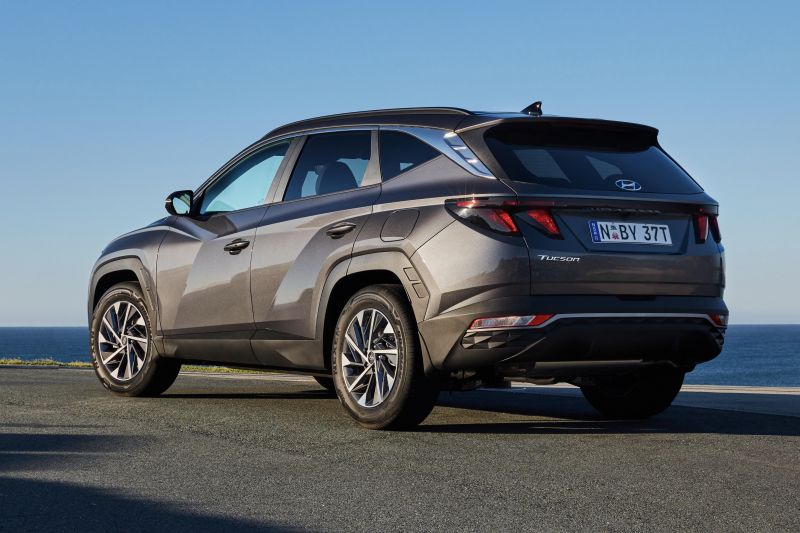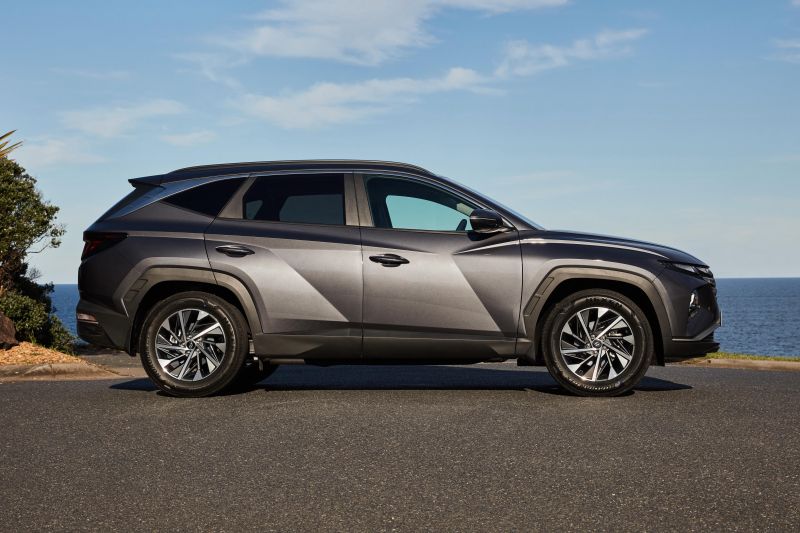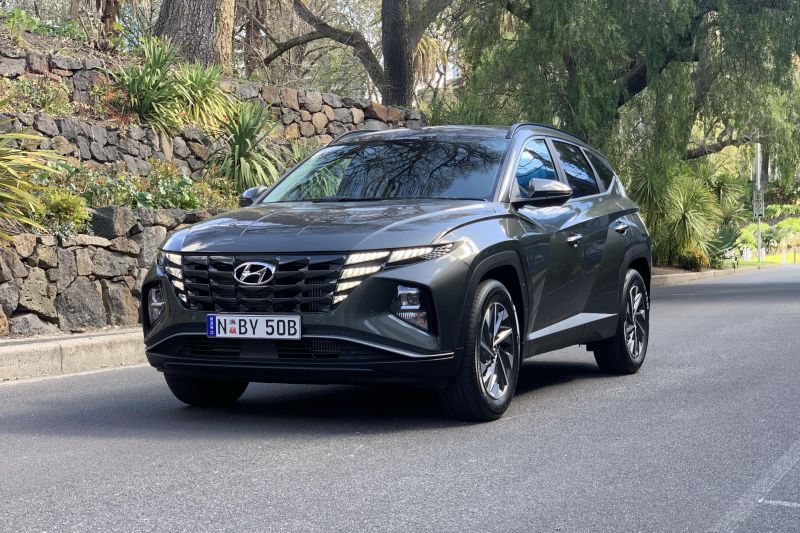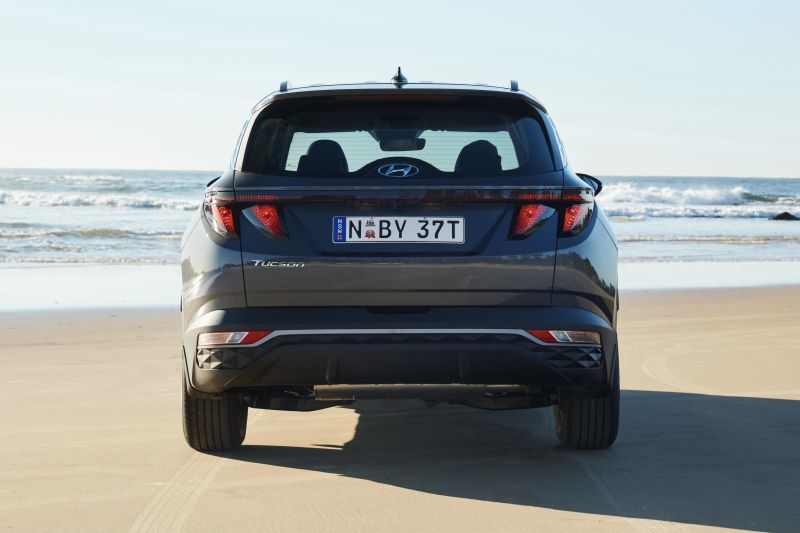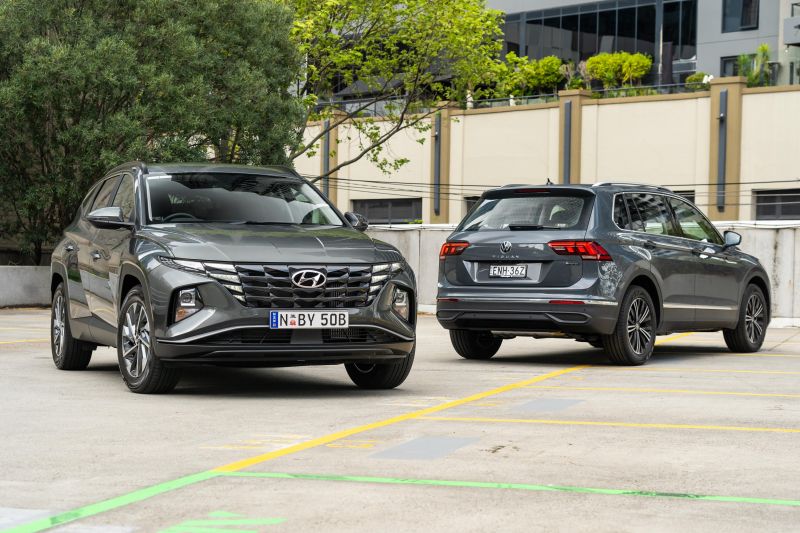Hyundai isn’t short on ambition.
No longer content dominating based on drive-away deals, the Korean giant has started moving upmarket.
Nowhere is that more evident than with the new Tucson SUV. Its predecessor was practical but mostly conventional; the new one has a radical design and a higher-tech interior.
That brings it neatly into line with the Volkswagen Tiguan, which has just been treated to a mid-life refresh.
With its almost premium looks, smooth-moving turbocharged petrol engine, and refined drive, even the entry-level Tiguan Life is more polished than the average mid-sized SUV.
Here, we’ve got the mid-range Tucson Elite with its 1.6-litre turbo petrol engine taking on the entry-level Tiguan Life, complete with a mid-range 2.0-litre turbo engine and the Luxury Pack.
How much?
Volkswagen Tiguan 132TSI Life
Pricing for the Tiguan 132TSI Life kicks off at $43,690 before on-road costs, but adding the Luxury Pack fitted to our tester bumps that up to $48,690 before on-roads.
Our tester, complete with $800 Dolphin Grey Metallic paint, had a recommended drive-away price of $55,053 based on a Victorian postcode.
Even with the option pack fitted, the 132TSI Life is the second-most affordable member of the six-strong range, which tops out at the R-Line 147TDI diesel.
MORE: 2021 Volkswagen Tiguan price and specs
Hyundai Tucson Elite 1.6T
The Tucson Elite 1.6T petrol is priced at $43,000 before on-road costs, with no options fitted.
Our tester, finished in $595 Amazon Grey, has a recommended drive-away price of $48,040 based on a Victorian postcode.
It sits right in the middle of the 14-strong Tucson range, and combines the most powerful engine option available with a generous list of standard equipment, but one that can’t match that of the range-topping Tucson Highlander.
The range tops out at the Tucson Highlander N Line 2.0T Diesel.
MORE: 2021 Hyundai Tucson price and specs
What do you get?
Equipment in both cars includes:
- Satellite navigation
- Wired Android Auto and Apple CarPlay
- 18-inch alloy wheels
- Powered driver’s seat (Luxury Pack on Tiguan)
- Heated front seats (Luxury Pack on Tiguan)
- Dual-zone climate control
- Front and rear parking sensors
- Keyless entry and start
- Black leather upholstery (Luxury Pack on Tiguan)
- Rain-sensing wipers
- Automatic headlights
Unique features to the Tiguan include:
- 8.0-inch touchscreen infotainment system
- Wireless Apple CarPlay and Android Auto
- 10.25-inch Digital Cockpit Pro replacing analogue gauges
- LED headlights, fog lights, tail lights
- Power tailgate
- Tri-zone climate control (two front, one rear)
- Space-saver spare wheel
Unique equipment to the Tucson Elite includes:
- 10.25-inch touchscreen infotainment system
- Full-sized spare wheel
Are they safe?
Only the Tiguan has a five-star rating from ANCAP – the Tucson hasn’t yet been tested by ANCAP or Euro NCAP.
The Volkswagen Tiguan was tested by Euro NCAP in 2016, and scored 96 per cent for adult occupant protection, 80 per cent for child occupant protection, 68 per cent for vulnerable road user protection, and 68 per cent for safety assist.
Both cars have the following safety equipment standard:
- Low- and high-speed autonomous emergency braking
- Adaptive cruise control with stop/go
- Lane-keep assist with lane-centring
- Blind-spot assist
- Rear cross-traffic assist
- High-beam assist
- Rear parking sensors
- Driver fatigue monitoring
The Tucson has junction assist, which will stop you if you’re about to turn across traffic and cause an accident, and safe-exit warning to stop you opening your door into passing cyclists.
What are they like inside?
Volkswagen Tiguan 132TSI Life
The Tiguan might have been treated to a pretty substantial upgrade outside, but the changes in the cabin are pretty subtle.
Stepping into a Tiguan after hopping out of the Mk 8 Golf feels like winding back the clock to a simpler time.
Proper climate controls? They’re in their own little pod below the dash. Volume and tuning dials? You bet, they sit to the left and right of the display.
There is a trade-off, though. The 8.0-inch touchscreen looks small compared to the panoramic display in the Tucson, and its graphics are a bit blocky compared to what we know the Volkswagen Group can do.
The lack of DAB digital radio remains hard to explain (although it’s coming for 2022) given it features in Audi and Skoda cars, and it’s hard to understand why Volkswagen forces you to manually send a map from the central screen to the digital instruments instead of just mirroring it.
Realistically though, the digital dials in the Tiguan are a huge improvement over the ugly analogue setup in the Tucson, and Volkswagen Australia deserves credit for making them standard. Mapping quirks aside, they remain some of the best in the business.
Traditional Volkswagen strengths are obvious here. The driving position is great for most body shapes, and sits you high enough to feel like you’re driving a proper SUV rather than a hatch on stilts.
The leather-wrapped steering wheel feels high-quality, and it has proper buttons rather than the capacitive gloss black pads of the R-Line variant. All the major parts you touch feel soft and expensive, although there are some hard plastics hidden lower down in the cabin.
It’s expensive ($2000, or part of the Luxury Pack) but the panoramic sunroof lifts the otherwise slightly gloomy interior without slashing the available headroom for tall drivers. Unlike the tiny portholes some brands fit, it’s absolutely massive.
Storage space is generous up front, from the felt-lined door bins to the versatile central bin – complete with a sliding cover and two cupholders. Volkswagen has subbed the USB-A ports for USB-C units as part of its mid-life update, but there’s no wireless phone charging in the Life.
Rear seat space is good, despite the Tiguan’s compact-ish looks. There’s room for average-height adults behind average-height adults, with plenty of legroom.
It’s rare, but the sunroof in our tester didn’t ruin headroom back there either.
Although both cars have rear vents, only the Volkswagen has its own temperature controls back there. It also gets a USB-C port and 12V outlet for charging.
There’s a fold-down central armrest with cupholders, deep door pockets, phone holders and map pockets on the seatbacks, and the usual three top tether/two ISOFIX child seat restraints.
The seats fold 60/40 and pack a central ski port, expanding the 615L boot to 1655L.
It’s worth noting that 615L figure is slightly misleading. It’s quoted with the sliding rear bench in its furthest-forward position and the boot floor lowered, which isn’t necessarily how owners will run.
Hyundai Tucson Elite 1.6T
Remember the old Tucson? The functional, slightly utilitarian Tucson? This isn’t that.
Hyundai has upped the flair for 2022, opting for a dramatic wraparound dash and a massive touchscreen angled overtly towards the driver.
It makes the straight-edged Tiguan look a bit demure, although there are some odd design choices. For one, there’s too much gloss black – and the analogue dials are criminally ugly.
The longer, wider Tucson has a greater sense of space than the Volkswagen. The driver and passenger sit further apart, and the seating position feels slightly more accomodating for tall drivers.
There’s more storage on the centre console, thanks to the deep central armrest bin and under-dash shelf, and the Tucson one-ups the Tiguan by offering wireless phone charging.
Hyundai would be well served moving to USB-C ports, though, as the world moves further away from the older USB-A standard with every new-generation phone.
The 10.0-inch display in the Tucson looks more polished than the slightly squeezed screen in the Tiguan, and packs DAB digital radio.
It’s more modern and faster, but it’s not necessarily more usable than the Volkswagen setup.
Widescreen Apple CarPlay looks incredible and is lightning quick, but Hyundai needs to go wireless across its range rather than only offering it on base models. It’s especially annoying given the voice control button on the steering wheel only works when you’re using smartphone mirroring.
While we’re talking technology, it’s worth pointing out the analogue dials in the Tucson. It’s almost as if Hyundai deliberately made them as ugly as possible to push people into the more expensive N Line with its digital dash.
Rear seat space in the Tucson is better than in the Tiguan. Its longer wheelbase frees up more legroom, and the interesting roofline hasn’t eaten up headroom.
It’s among the most spacious mid-sized SUVs on the market in 2021, although a side-by-side test with its new Kia Sportage sibling is necessary to see who’s packaged their shared bones better.
The bench is broad, so it’s better for carrying three people across, and you’ll more easily squeeze in car seats side-by-side. The rear bench doesn’t slide, nor is there a central ski port, but you can adjust the backrest angle to free up more space.
You also don’t get a third set of temperature controls, but there are vents back there along with dual USB-A ports.
On paper, the Tucson has a smaller boot than the Tiguan, but it’s actually a longer and more usable space. Folding the second row expands the 539L space to 1860L. Shorter owners will be annoyed by the fact the tailgate isn’t powered.
| Hyundai Tucson | VW Tiguan | |
|---|---|---|
| Length | 4630mm | 4509mm |
| Width | 1865mm | 1839mm |
| Height | 1665mm | 1684mm |
| Wheelbase | 2755mm | 2681mm |
| Boot | 539L | 615L |
What’s under the bonnet?
Volkswagen Tiguan 132TSI Life
Power in the 132TSI comes from a 2.0-litre four-cylinder turbo petrol with 132kW of power and 320Nm of torque, mated with a seven-speed dual-clutch transmission.
All-wheel drive is standard, and claimed fuel economy is 8.8L/100km on the combined cycle.
The Tiguan has a 60L fuel tank and drinks 95 RON premium unleaded fuel.
Hyundai Tucson Elite 1.6T
Power in the 1.6T comes from a 1.6-litre four-cylinder turbo petrol with 132kW of power and 265Nm of torque, mated with a seven-speed dual-clutch transmission.
All-wheel drive drive is standard, and claimed fuel economy is 7.2L/100km on the combined cycle.
The Tucson has a 54L fuel tank and drinks cheaper 91 RON regular unleaded.
How do they drive?
Volkswagen Tiguan 132TSI Life
The Tiguan feels like an overgrown Golf, which can only be a good thing.
The engine and transmission are excellent. Volkswagen has the 2.0-litre turbo engine down to a fine art by now, and uses the motor from the Tiguan in a huge range of guises across its brands.
Although it has an identical power output to the Tucson, it packs more torque and is more refined in most situations. Lean on the throttle and it pulls smoothly from just off idle, push a bit harder and it never feels strained or overworked.
Having more power is never a bad thing, but you’ll never really need more than the Tiguan 132TSI has to offer.
Volkswagen has subbed the dual-clutch transmission in its Golf hatchback for a more conventional torque converter, but the Tiguan keeps its DSG for 2022.
It’s not quite as smooth as an old-fashioned slushbox off the mark, but the dual-clutch in the 132TSI isn’t all that far from it – no doubt aided by the fact the car doesn’t have idle start/stop to trip it up.
The super crisp, snappy feeling that’s characterised Volkswagen Group cars since the advent of the DSG is there, and gives you plenty of reason to knock the shifter into Sport, or take charge with the paddles.
Although Hyundai also uses a dual-clutch in the Tucson, it isn’t a match for the one in the Tiguan.
The rest of the drive is similarly polished. 18-inch wheels aren’t small, but they’re small enough to leave space for chubby rubber in the Tiguan’s arches. The result is a car that rides brilliantly in the city.
It irons out bumps and potholes impressively, but without sacrificing the tied-down, sporty feeling buyers have come to expect from a German crossover.
Sure, the wheels on the R-Line are sexier, but the 18s on the Life make for a better car.
You don’t need adaptive dampers and a million drive modes when the basic setup is good, and this basic setup is excellent.
The steering strikes a perfect balance between being light and easy to twirl at city speeds, and being heavy enough to inspire confidence on the highway.
It’s the consummate all-rounder, the Tiguan, there’s very little it won’t do. With that said, it’s not perfect.
There’s a bit of wind noise on the highway, and its shorter wheelbase and taller body mean it doesn’t have the same big-car feel as the newer, bigger Hyundai at speed.
Hyundai Tucson Elite 1.6T
The Tucson feels immediately more grown up than its predecessor, and bigger than the Tiguan.
Although it’s similar on paper, the turbocharged engine and dual-clutch combination in the Tucson feels a bit rougher around the edges than the setup in the Tiguan.
For starters, it’s more awkward off the mark, and the transmission occasionally gets caught between first and second gear in a way the Tiguan and its DSG just doesn’t.
Shifts are impressively quick once you’re up and moving, but they aren’t as sharp as those of the Volkswagen.
The engine also lacks the final coat of polish evident in the Volkswagen.
It’s used in the Cerato GT and i30 N Line so it has plenty of punch, but it doesn’t have the same effortless feeling of anywhere, anytime performance you get from its German rival.
Get into its power band and it’s capable of getting a move on, but the window is narrower than in the endlessly flexible Volkswagen.
There’s no doubt the Tucson 1.6T has enough performance, and represents a big step up from the breathless base engine. It just isn’t as resolved as the engine in the Tiguan, which remains a class-leader.
With a longer wheelbase and wider track, it’s no surprise the Tucson feels a bit more planted than the Tiguan.
Hyundai has struck a deft balance between comfort over pockmarked city streets and handling. Speed bumps and potholes don’t do much to ruin the ambience in the cabin, and there’s no float or looseness from the suspension.
Those 18-inch alloy wheels don’t have quite the same wow factor as the 19s on the Highlander, but they allow for a chubby sidewall and plenty of suspension travel.
With light steering, a full suite of driver assists, and a tighter turning circle than the Tiguan, the Tucson doesn’t feel massive in the city.
Although you miss out on the clever blind-spot view camera offered elsewhere in the Hyundai range, the Elite will still warn you if you’re about to open the door into traffic or a cyclist, which is a handy feature the Volkswagen can’t match.
At highway speeds the Tucson is slightly more refined than the Tiguan, with a hint less wind noise and a slightly more relaxed ride borne of its longer wheelbase.
Why, though, does Hyundai’s lane-keeping assist system feel the need to wrestle the wheel from your hands at the merest hint of drift from the lane. It’s way too interventionist, even when you turn off the (even more aggressive) lane-centring function.
| Hyundai Tucson | VW Tiguan | |
|---|---|---|
| Weight | 1656kg | 1665kg |
| Front suspension | MacPherson strut | MacPherson strut |
| Rear suspension | Multi-link | Multi-link |
| Dampers | Passive | Passive |
| Steering type | Electro-mechanical | Electro-mechanical |
| Front brakes | Ventilated disc | Ventilated disc |
| Rear brakes | Solid disc | Solid disc |
| Turning circle | 11.8 metres | 11.9 metres |
| Ground clearance | 181mm | 201mm |
Cost of ownership
Volkswagen Tiguan 132TSI Life
The Tiguan is covered by Volkswagen Australia’s five-year, unlimited-kilometre warranty.
There’s also roadside assistance, which is renewed each time you service your Tiguan at a participating Volkswagen dealer for up to 10 years.
Volkswagen offers capped-price servicing and inclusive service packages – the latter available in three- and five-year variants. A three-year pack will set you back $1500 upfront, five years costs $2500.
Maintenance is required every 12 months or 15,000 kilometres, whichever comes first.
Hyundai Tucson Elite 1.6T
The 2021 Hyundai Tucson is backed by a five-year, unlimited-kilometre warranty.
There’s also roadside assistance, which is renewed each time you service your Tiguan at a participating Hyundai dealer.
Maintenance is required every 12 months or 15,000km.
The first five services each cost $319, for a combined cost of $1595 for five years of servicing under Hyundai’s capped-price program.
CarExpert’s Pick
Hyundai has been ambitious with the new Tucson, and has mostly nailed the brief.
Love it or hate it, you won’t miss it in traffic, and the more spacious interior raises the bar compared to its more utilitarian predecessor.
Does it pack the polish to take down the Tiguan? Not quite.
Yes, it’s cheaper, but its engine and transmission feel a bit underdone compared to the excellent powertrain in the Volkswagen.
There’s no doubt the Tucson represents better value than the Tiguan, but it’s not quite a better car.

